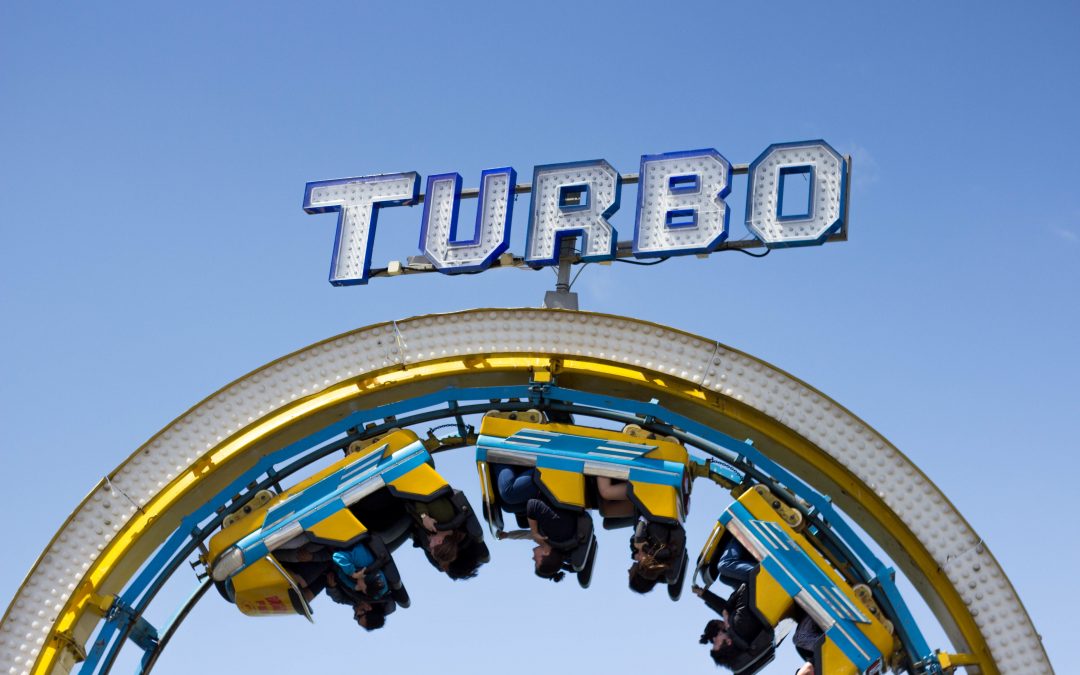this article originally appeared on LinkedIn Pulse
Think about your business. Think about the past one, five, 10 years you’ve been doing what you’ve been doing. Does it resemble a roller coaster? It should.
Every business cycles through high highs with many clients (and cash) followed by low lows with a few clients and a lot of room to grow. This is the ebb and flow of business.
For most people, these ups and downs aren’t fun. I get that. But when you’re on the ride, there are ample opportunities to learn, adapt and grow. You just have to know how.
Fluctuations in how many clients you have is completely normal and to be expected. I’ve had clients at every point on the roller coaster and, with my help, they’ve been able to prepare for the low times when they’re high and get back to the high times when they’re low.
The most important thing I’ve noticed that all of them have in common is that no matter how they got into their peak or valley, it’s how they respond to and learn from their circumstances that determines their ultimate success or failure.
Two causes, one outcome
I have a client, for example, who bent over backward for one of her contracted customers. But as their business relationship developed, they discovered the personalities weren’t jiving. They didn’t work well together. These things happen. Unfortunately, the result is often the loss of a client.
In this case, she had the opportunity to plan for the loss. She knew early on the relationship with her customer was doomed to fail and compensated accordingly.
But you can’t always anticipate the end. Sometimes, a customer leaves with no forewarning and you find yourself shit out of luck when you least expect it.
Another client of mine worked tirelessly for months to score a big contract. He restructured his team, created a scalable workflow and spend thousands in time and resources to get the client’s project up and running. There was just one problem. The contract never came to fruition. The customer changed direction on the project with no warning. So there he was, six months and countless dollars down the drain preparing for something that never even materialized.
He did everything he needed to do to win this client, and he expected the business to come through. Unfortunately, things didn’t work out, and he lost an important piece of business with nothing to fall back on.
How to ride the rollercoaster
Whether you have time to plan for the loss of a client or not, dealing with the aftermath is never easy. And there are only two things that can get you back on top: adaptation and preparation.
Despite what the customer may have told you, there’s always a chance they left because they weren’t happy with the product or service they received. So take these losses as an opportunity to review and evolve. Evaluate what your business does and how, analyze your offerings and really get into the nitty-gritty of how your business operates.
Savvy businesses engage a strategist, like me, to cut through the crap during the lean times, restructure and improve. And if you find yourself already at the top of the rollercoaster, there’s good news! A strategist can help with that, too.
This is an old adage, but totally true: plan for the worst and hope for the best. Even if you’re playing full out with tons of clients, you can never go wrong with a little planning. In fact, I’d argue a solid game plan has kept many top players in the business world from descending into a valley.
No matter where you are on your business roller coaster, a willingness to adapt and a solid plan will get you far. Need help riding the rollercoaster? Get in touch with me here or on LinkedIn.



